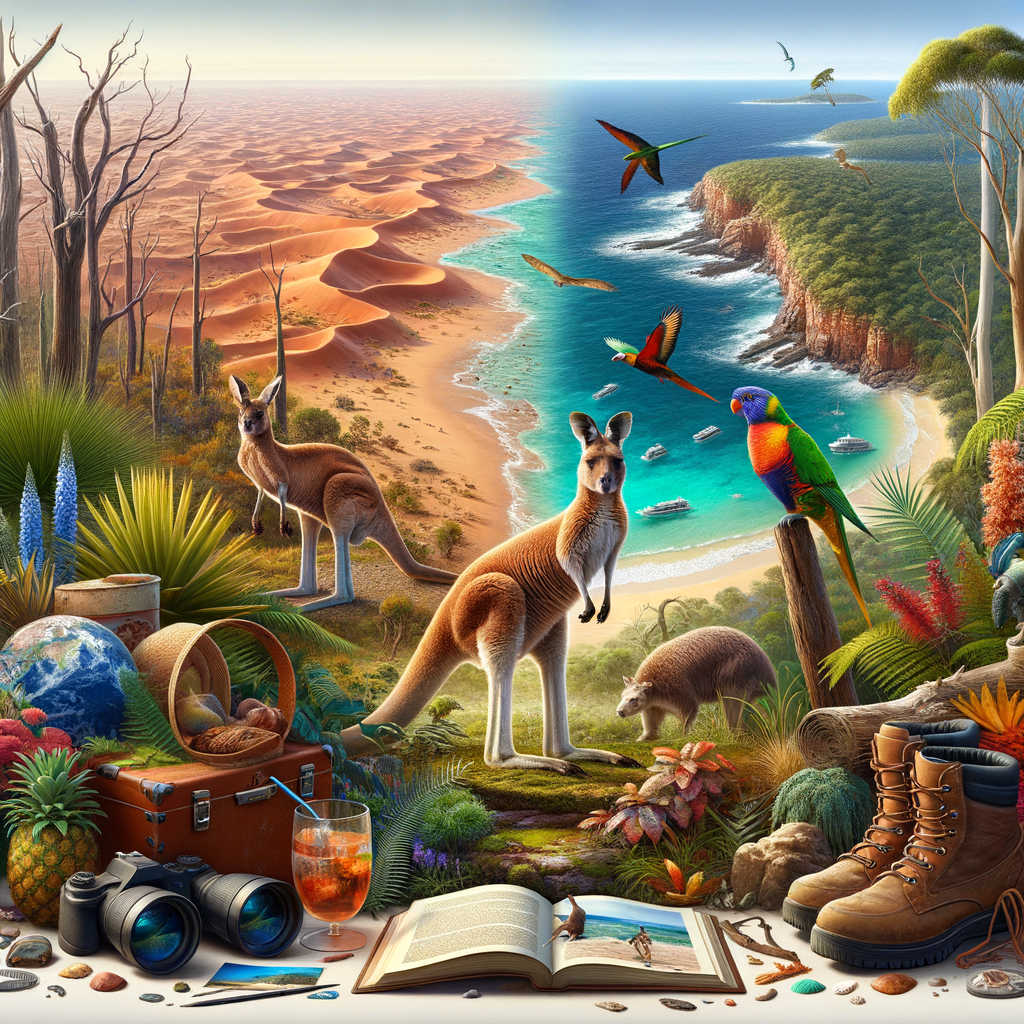Physical Address
304 North Cardinal St.
Dorchester Center, MA 02124
Physical Address
304 North Cardinal St.
Dorchester Center, MA 02124

Australia, known for its unique wildlife and breathtaking landscapes, is home to an array of diverse ecosystems. From the arid expanses of its desert regions to the lush greenery of its rainforests, each ecosystem presents a unique blend of flora and fauna that contribute significantly to the country’s rich biodiversity. This article provides an in-depth exploration into some of these fascinating ecosystems.
Encompassing over 70% of the Australian landmass, the outback is characterised by its arid climate and sparse vegetation. Despite these harsh conditions, it hosts a variety of species uniquely adapted to survive in this extreme environment. The Red Kangaroo, Perentie Lizard, and Bilby are among several animals whose behavioural adaptations allow them to thrive here.
Plant life in this region has also evolved remarkable survival strategies. Spinifex grasses and Acacia trees have developed extensive root systems that reach deep underground for water sources during prolonged droughts.
In stark contrast to the outback lies Australia’s Wet Tropics Rainforest – a UNESCO World Heritage site located along the northeastern coast. Known as one of the oldest rainforests on Earth, it contains an abundance of endemic species such as the Southern Cassowary and Musky Rat-Kangaroo.
This ecosystem teems with towering trees draped in vines, creating a dense canopy that supports a plethora of birdlife like Rainbow Lorikeets and Superb Fruit-Doves. The forest floor is bustling with insects while crystal-clear streams provide habitats for freshwater fish and amphibians.
Offshore from the Wet Tropics Rainforest, under the azure waters of the Coral Sea, lies another of Australia’s World Heritage sites – The Great Barrier Reef. Spanning over 2,300 kilometres, it is the largest coral reef system on Earth and supports a staggering array of marine life.
Home to more than 1,500 species of fish, numerous varieties of sharks, rays, and dolphins as well as six species of sea turtles. The reef also hosts around 400 types of hard coral which form an underwater city teeming with life.
High above sea level in southeastern Australia and Tasmania are the country’s alpine regions. These areas experience heavy snowfall in winter and are home to unique cold-tolerant flora like Snow Gums and Alpine Daisies. Fauna includes the Mountain Pygmy-possum – Australia’s only hibernating marsupial – and Snow Skinks that have adapted to these frosty conditions.
Along Australia’s northern coastline lie extensive mangrove forests that act as a crucial buffer between land and sea. They serve as nurseries for many marine species including mud crabs and barramundi while hosting an array of birdlife such as Egrets and Herons.
Mangroves are uniquely adapted to salty conditions with complex root systems that filter out salt. They also play a vital role in carbon sequestration, helping mitigate climate change impacts.
Dominating much of Australia’s landscape are eucalyptus forests, home to over 700 species of gum trees. These forests support a variety of wildlife including Koalas who feed exclusively on eucalyptus leaves, Kookaburras known for their distinct laughter-like call, and the elusive Platypus.
These forests are also prone to bushfires, an ecological disturbance that triggers eucalyptus seed germination and allows for the renewal of these ecosystems.
In its vastness, Australia encapsulates an astounding variety of ecosystems, each with its unique set of species that have evolved remarkable adaptations to survive. These ecosystems not only contribute to the country’s rich biodiversity but also play a critical role in global ecological processes. As we continue to explore these fascinating habitats, it is crucial that we also work towards their preservation for future generations.